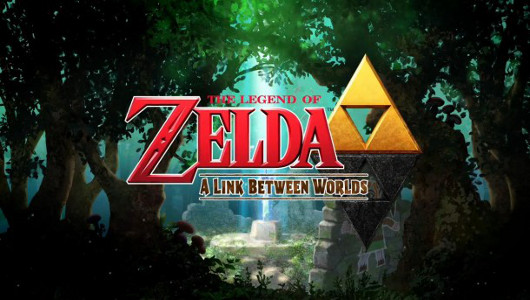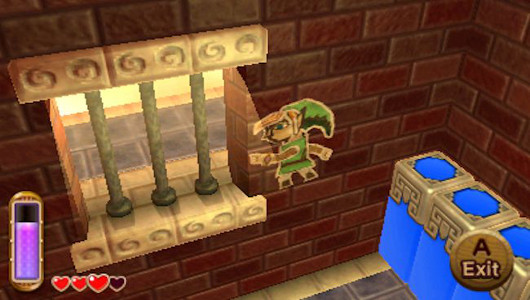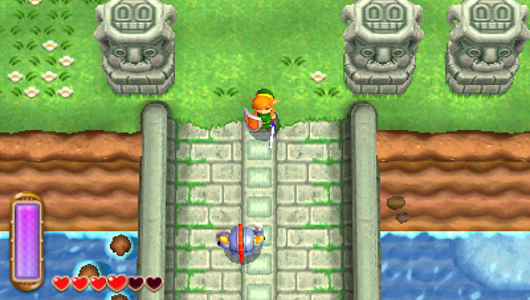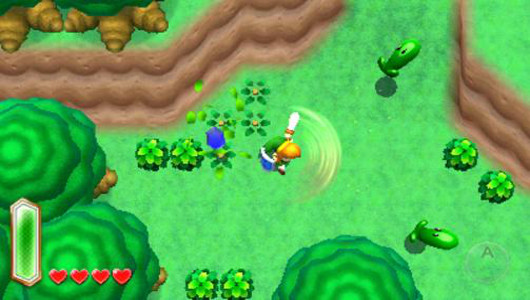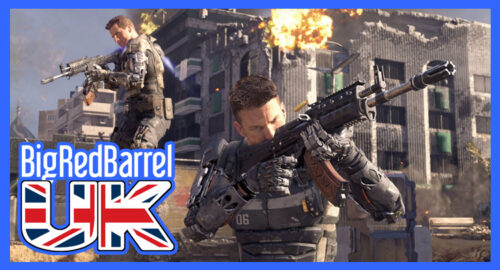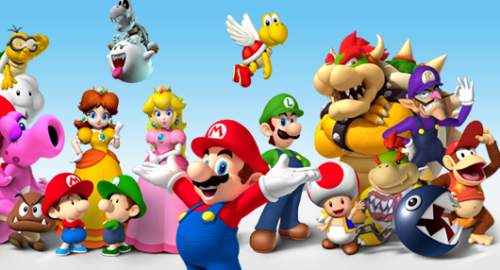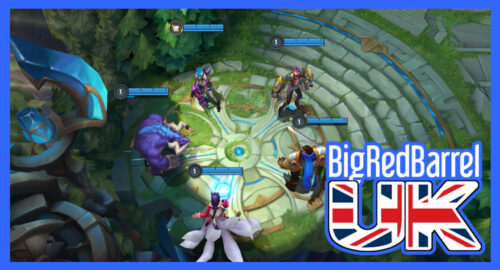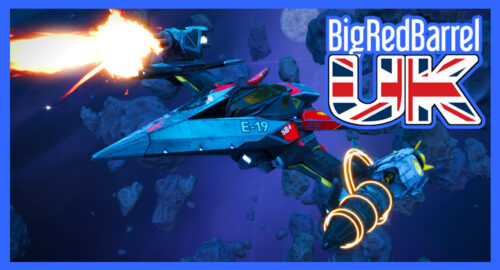How often do you hear people talk about awful The Legend of Zelda games? The answer to that question is: never. We’re now sitting at 18 games in the main franchise – not including remakes – with another on the way for the Wii U soon. Nintendo frequently redefines the series with each release by adding enough new features to keep the franchise fresh whilst also catering to long-time fans. The latest release – The Legend of Zelda: A Link Between Worlds – continues this trend.
• Developer: Nintendo
• Publisher: Nintendo
• Reviewed on: Nintendo 3DS
• Also Available On: N/A
• Release Date: Available Now
A Link Between Worlds takes place within the same universe/timeline as The Legend of Zelda: A Link to the Past for the SNES. However it has been stressed the game is not a direct sequel, nor a remake of that particular game. If you’re not clued up on the general storyline in Zelda games allow me to fill you in. You play as Link, a young boy who – unbeknownst to him – is the hero destined to save Hyrule from one form of destruction or another at the hands of Ganon/Ganondorf. Whilst this basic premise serves as the plot to most Zelda games, each has their own unique take.
Whilst many iterations have adopted a third person point of view in a 3D world, A Link Between Worlds returns to a top down viewpoint of the overworld and a gameplay style which – as mentioned previously – is a definite homage to A Link To The Past. A Link Between Worlds sees Link initially taking on an evildoer named Yuga. Yuga has the ability to turn anyone into a painting and in turn these paintings serve as one of the main plot points of the game. They also give rise to one of the new abilities you can use as Link.
Early on in the story, a magic bracelet bestowed upon him gives Link the ability to turn into a painting at will and merge into walls. By doing this you can reach places which otherwise wouldn’t be accessible and also solve a variety of puzzles. The game may be in a top down perspective but you are in no way constrained by it. For example, you might encounter a wall on a narrow path with a drop into the abyss on either side of you. By turning into a painting on one surface of the wall you can walk around the side and re-emerge on the other side back into top down view. It’s a neat little feature which comes in handy and is used a fair bit in gameplay. There were times when puzzles would absolutely stump me and then I would realize all I needed to do was merge with the wall in order to solve it.
Speaking of puzzles, A Link Between Worlds offers a slew of dungeons and puzzles to solve. Most of the dungeons revolve around the acquisition of a certain item and have a certain theme. An example of this is the desert themed dungeon where you use the sand rod item to solve the puzzles within. Each of these dungeons have been built from the ground up and they are by far some of the most challenging in the series, for both good and bad reasons.
On the positive side the dungeons are all unique and fun to complete. They can also be tackled in almost any order you please at certain points in the game. The level design has taken a more vertical and multi-tiered route this time around, taking advantage of the stereoscopic 3D effect of the 3DS system and they’re all designed to a very high standard. They may not be nearly as frustrating as dungeons in previous iterations but still offer enough of a challenge to keep players on their toes and using their brains to solve puzzles.
On the negative side some of the dungeons can be a tad unforgiving. One example I have of this is dying at the hands of a boss monster multiple times and being forced back to the start of the dungeon with limited health and having to make my way through the dungeon again to restart the boss fight. Even after picking up health along the way I still didn’t have nearly enough to survive the encounter. A save point or checkpoint just outside the boss dungeons would have been a godsend.
A Link Between Worlds is paced a lot quicker than its predecessors. The second building you walk into warrants you with your first sword – and you will have obtained the Master Sword shortly after that. Items in the game such as the aforementioned sand rod and others such as the classic bow and boomerang can be obtained in the game almost instantaneously. The concept of item rental has been introduced in A Link Between Worlds and it works tremendously well. Any item you want will be available to use by paying a small fee, the catch here is that if you die you will lose the item and will need to pay the rental fee to acquire it again. You can circumvent this later on in the game once you’re given the option to buy these rental items for a substantial amount more than the rental price. It’s definitely a game changer as you might only need an item once or twice and may never need it again, but on the other hand things such as the bow, bombs and hookshot are definitely items you will frequently need, therefore buying them would make more logical sense.
This rental system also adds a new degree of challenge to the game. By dying you’re forfeiting the items you rented and if you were in the middle of a challenging dungeon you’re going to need to trek all the way back to your house to rent – or buy if you’re dying frequently – the item you need again. This happened to me at one point when I met with a terrible fate — if you don’t get that reference, stop reading and leave — in the middle of a dungeon and lost around eight rented items. You play a high risk game by carrying that many items on your person at one time, you genuinely fear for your life.
Item usage and merging into walls is based on a magic meter in the bottom left of the screen. You can only use an item so many times in a row before you need to recharge it – it’s rather quick though – and can only stay merged in a wall for so long before re-emerging.
Another big new feature within A Link Between Worlds however, is right there in the title of the game. Hyrule is not the only place you get to explore this time. The Kingdom of Lorule (I see what Nintendo did there) is essentially the polar opposite of Hyrule. Whilst the design and layout of the two worlds is nearly identical you can only access certain areas of Lorule by going to the same area in Hyrule and travelling through a tear in the world as a painting. It turns the entire overworld into one big puzzle, which more than makes up for the relatively small size of the game world itself. In a sense though the smaller game world – at least in comparison to other games in the series – makes it a lot easier to get around and get where you need to be. I can’t tell you how frustrating I found the endless hiking to locations in games such as Ocarina of Time and Twilight Princess.
The art direction in the game is absolutely gorgeous and has catapulted A Link Between Worlds into the best looking games club for the 3DS. Accompanying this is a sweeping and beautiful soundtrack including the well-known Zelda theme as well as some brand new pieces. The game is a joy to look at and listen to as well as play.
Overall, A Link Between Worlds treads on some familiar ground with a classic gameplay style, perspective and themes but combines them with stellar level design, gameplay mechanics and risky concepts which have more than paid off. These not only make this yet another “good” Legend of Zelda game, they may very well make for one of the strongest entries in the series in the last decade or so. It’s not perfect, but it’s an entry that will set the benchmark for all future Legend of Zelda games just as Ocarina of Time did all those years ago. In short, Nintendo have done it again and the 3DS has yet another “must own” title in its library.
[youtube id=”n7LmI7wN_9Y”]
